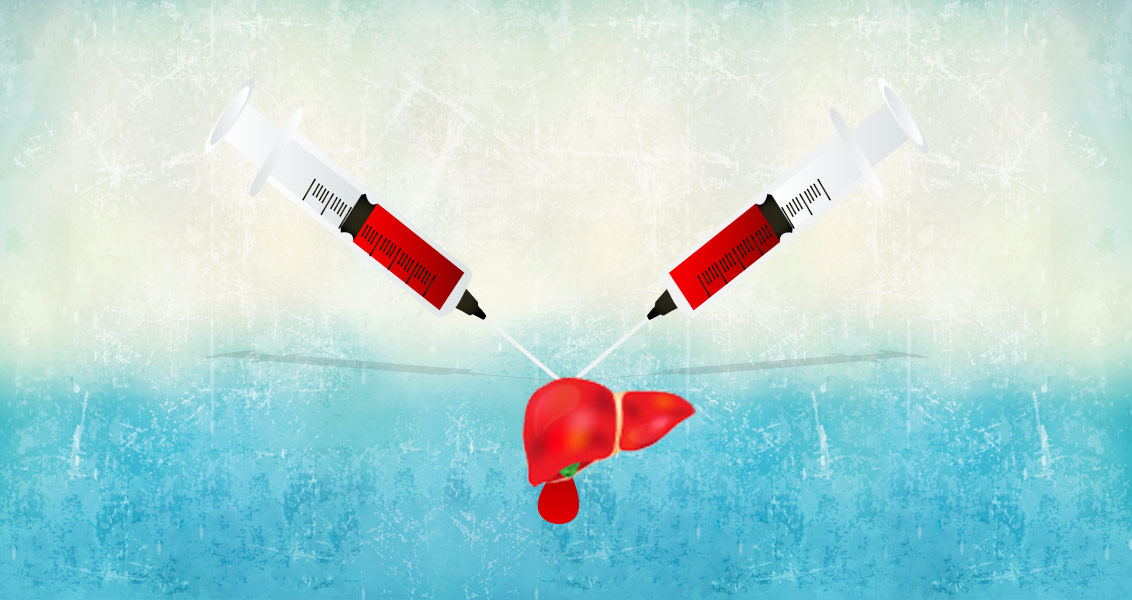

Hepatitis is a clinical condition characterized by the inflammation of the liver. This is a symptom associated with many disorders or damages of the liver but the most common cause of the condition is the viral infection. Other major causes of hepatitis include drugs, alcohol, and other toxins. Major symptoms associated with hepatitis include jaundice (a yellowing of the skin and eyes), stomach pain, nausea and vomiting, loss of appetite, diarrhoea and slight fever. Individuals may show varied extents of each symptom and hence difficult to judge at times.
Hepatitis caused by viral infection is termed as viral hepatitis and it represents one of the serious challenges in the healthcare system. Millions of people get infected by viral hepatitis every year and this group of infections account for a major cause of death. According to reports, in the year 2013 alone 1.5 million people have died of this cause. East Asia represents the most severely affected region of the world by viral hepatitis.
Types of viral hepatitis and modes of transmission
The viral hepatitis is of different types and also observed in different forms like acute or chronic conditions. The types of viral hepatitis include Hepatitis A, B, C, D and E each caused by different viruses. Among these, Hepatitis A, B and C are prevalent among the population; Hepatitis A otherwise known as Infectious jaundice is caused by Hepatitis A virus. Hepatitis E is another type of acute hepatitis, caused by Hepatitis E virus.
Both these types of viruses are transmitted via the fecal-oral route. Contaminated water or food act as the primary source of transmission in these infections. Developing countries are at greater risk of these viruses due to open defecation and poor sanitation.
Both of these infections manifest an acute form of hepatitis and are more common in the developing world. Hepatitis B, C and D are chronic infections and transmitted by exposure to infected blood or other body fluids like semen, vaginal secretions, etc., or at the time of childbirth when the virus can be transmitted from mother to child. Hepatitis D virus infection happens only to those individuals already infected with Hepatitis B.
Diagnosis and treatment
Hepatitis cases are diagnosed on the basis of the common signs and symptoms and blood tests for viral antigens and anti-viral antibodies. However, in chronic cases, other tests like liver biopsies are also recommended. Most of the hepatitis infections get cured over a period of time ranging from several weeks to few months, if not aggravated to a chronic level.
Generally, about 2-6% of Hepatitis Band 75-85% of Hepatitis C infections among adults attain a chronic level. Infected infants and children have higher rates of development of chronic hepatitis. Severe cases of acute viral hepatitis and chronic hepatitis cases are treated with different antiviral drugs of various levels depending on the severity of the condition. Tertiary level of liver damage may necessitate even liver transplantation. Very effective vaccines are available for Hepatitis A and B, which have been used as a mass weapon against these diseases. However, vaccines against Hepatitis C, D and E are yet to be developed. Therefore, preventive measures against these viral infections are highly needed.
Prevention
Prevention of viral Hepatitis involves measures at personal, clinical as well as community levels.
Personal Level Preventive Measures
1. Be aware of the mode of spread of hepatitis and avoid risks of contaminated food and maintain a good level of personal hygiene.
2. Practice safe sex. In case you get tattoos or any other piercings or in saloons ensure that sterile needles or sharps are used for the purpose.
3. Get immunized against Hepatitis A and B.
4. Take cautious steps against infection while traveling. While in travel, look for safe water for drinking, brushing and bathing etc. Keep hand sanitizers and use them in places where water is likely to get contaminated. Make use of commercial drinking water available in sealed containers.
5. Avoid sharing of personal items such as razors, sharps, pins, tooth brushes, etc. which may pierce either the skin or the mucous membrane.
6. Avoid sharing needles, in the case of drug users.
7. Avoid intake of alcohol or drugs to avoid complications of Hepatitis infection.
Clinical Level Preventive Measures
1. Ensure use of disposable syringes, needles, sharps, etc. to avoid contamination.
2. Immunize all medical and para medical professionals against Hepatitis A and B. Take all measures to avoid infection to professionals through enhanced safety levels in the clinics, hospitals or other healthcare set ups.
3. Implement safe disposal process for contaminated waste materials.
Community Level Preventive Measures
1. Create awareness on hepatitis, mode of spread, risks, treatment and preventive measures across all strata of the society. This is more important in the developing countries.
2. Ensure safe disposal of medical waste.
3. Take measures to avoid open defecation and contamination of water and food.
An all-out action plan involving administrative bodies, healthcare service providers, enlightened citizens and social workers is required for the better management of hepatitis risk across the world.

